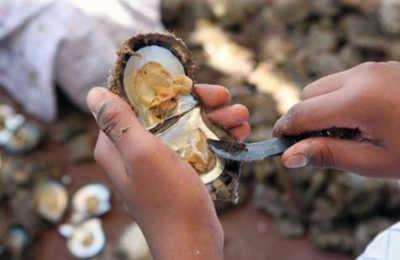
Unique Bahrain pearl project 'to bring big benefits'
Manama, March 19, 2014
A project to create one of the world’s biggest offshore preservation sites, which could be worth more than $200 billion to Bahrain’s economy, is now in the planning stages.
It involves creating a massive conservation area at sea covering an area of 1,350 sq km, said a report in the Gulf Daily News (GDN), our sister publication.
The Northern Heyrat Preserve would include four natural pearling sites off the north coast of Bahrain and is intended to boost tourism, while safeguarding the maritime ecosystem.
It is described as the first project of its kind in the Arab world and is being spearheaded by the Supreme Council for Environment, in partnership with the Culture Ministry, United Nations Environment Programme and the Arab Regional Centre for World Heritage.
"The most important thing about this project is that it will create a sustainable ecosystem that can generate revenue," SCE deputy chief executive Dr Mohamed Mubarak bin Daina told the GDN yesterday.
"If you protect an area like that, you'd be able to generate tourism similar to countries like the Maldives - who cannot fall back on oil or other natural resources.
"It's the first project of its kind in the Arab region."
He added the International Union for Conservation of Nature had been consulted on best ways to move forward with the project.
"The Pearl Route (in Muharraq) is now registered as a Unesco World Heritage Site, which also helps us with planning this (project)," he said.
"We aren't implementing the whole project ourselves because it involves so many parties, but we will be guiding everyone."
Dr Bin Daina spoke to the GDN on the sidelines of a workshop on applying ecosystem methodology in preserving Bahrain's natural oyster beds, which were a vital source of income before the discovery of oil.
Unep's West Asia regional co-ordinator Dr Fouad Abousamra said the project would not only bring in money from tourism, but would also have economic benefits as a result of protecting the environment.
He estimated it would benefit Bahrain to the tune of around $227.1 billion, which includes potential profits and the value of investing in the country's biodiversity for future generations.
"That is the site's value in terms of cultural, economic, social and global environmental services," Dr Abousamra explained.
"This is still a rough figure, but we have worked hard to find this estimate.
"It is not all about profit or revenue, the public need to understand some of it is about future sustainability.
"The breakdown will be between $7.5 million and $287 million in tourism, recreation and research; between $147.1 million and $5.6 billion for fisheries; around $3.1 billion in coastal protection; $109 million in biodiversity; and between $48.6 million and $235.7 million in water quality.
"Its worth comes from the fact that the site is unique in the world.
"You can't find something like this anywhere else in the world."
The project focuses on four pearling sites located to the north of Bahrain: Najwat Bulithama, Heyr Bulithama, Heyr Ishtayya and Heyr Bu-imama.
It is hoped it will revive Bahrain's pearling industry, which has a proud history dating back more than 1,000 years - but which has faltered in recent decades following the discovery of oil and the emergence of man-made cultured pearls.
SCE acting director of biodiversity Abdulqader Saeed Khamis told the GDN the project would commence next year.
"We're in the planning stages until the end of 2014 and we're hoping to start implementation next year," he said.
"That's our projection, but we are working with lots of stakeholders and interested parties and the time frame is dependent on those aspects as well."
Among those briefed on the project at yesterday's workshop were representatives of Bahrain's Coastguard, non-governmental organisations, municipal officials and university research departments.
"We want to profit the local community," said Khamis.
"That's the most important thing.
"We have taken four years to work on this programme and plan it. We want to see it take off.
"It will help a lot of people, including the fishermen.
"We want to see sustainability in fishing - and we want to have them fishing in the area in a responsible way.
"It will also drive the pearl economy back because there are studies that show oysters will produce more pearls if the area is fished." - TradeArabia News Service







